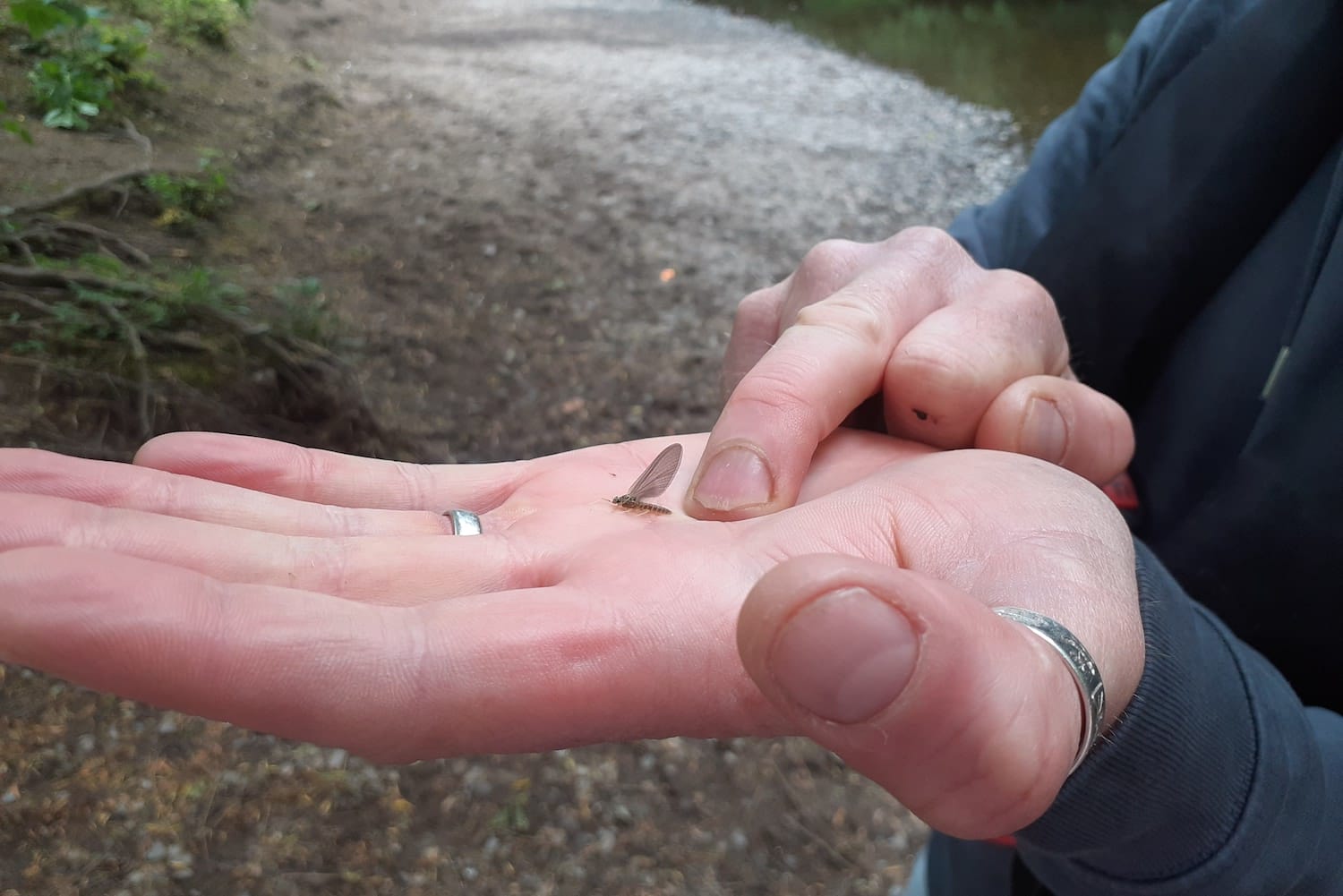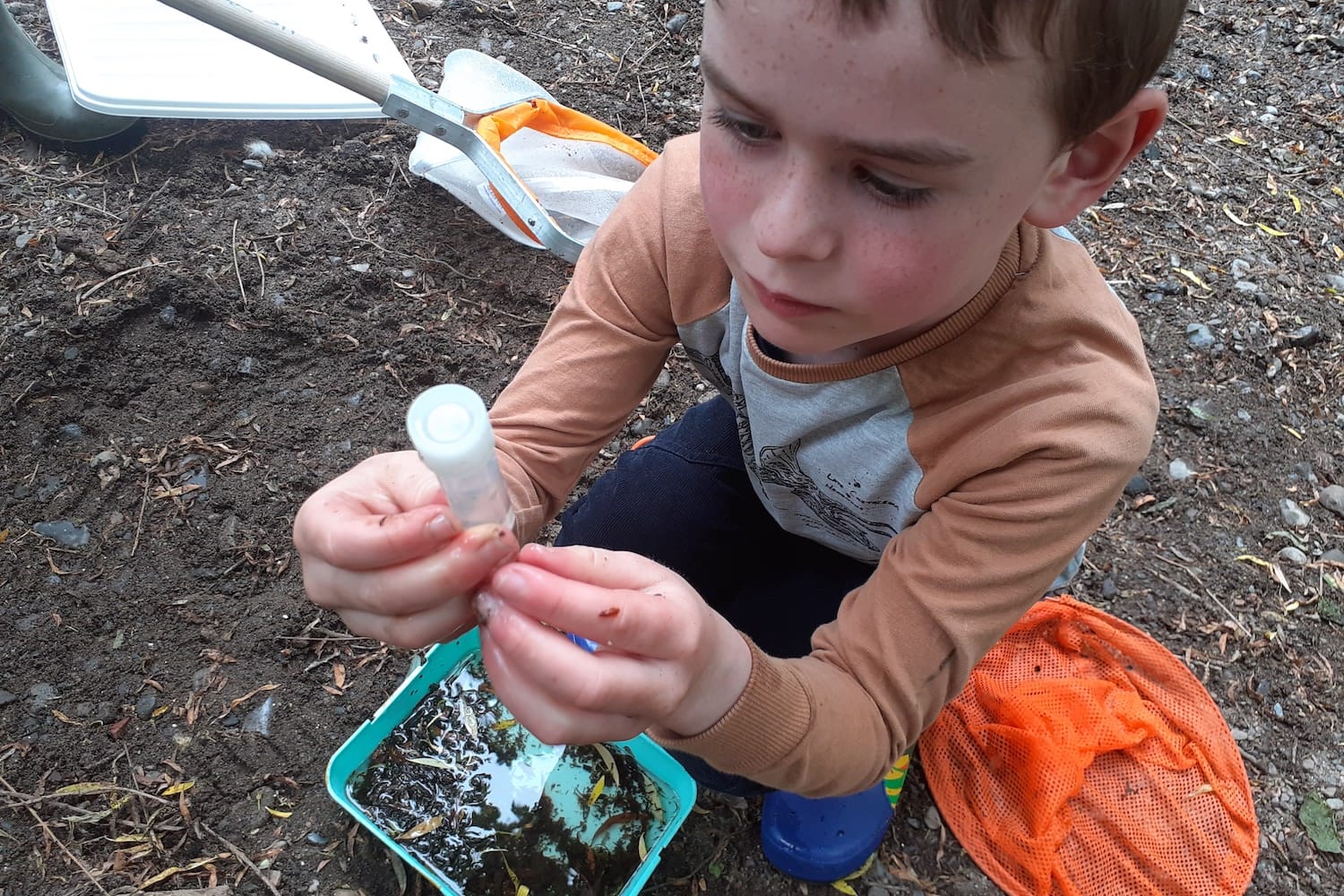What’s the best way to tell area residents about plans for a new asylum shelter nearby?
The government should tell communities directly about plans for new asylum shelters, some activists and politicians say.
Hugh Feeley is a “group expert” in a 10,700-member Facebook group, where he helps people identify insects they’ve snapped photos of.

A crowd of insects busies back and forth over the bubbling shallows of the River Dodder.
Dapples of greenish light shine through the rich spring leaves. Through the branches, a grey wagtail swoops like a trapeze artist into the swarm.
Below, at the surface of the water, in thigh-high green wellies, Hugh Feeley kicks at the water as it rushes low over the stones, directing it into a long white net.
With a satisfied swoop, he lifts up the net, and splashes back to shore.
“What I did there was called a kick sample,” he says, showing the brown mulch inside the net. “Disturbing the river sediments and it basically causes the insects to drift.”
Feeley plucks out what look like wiggling pieces of muck and pops them into a tray of shallow water. They’re larvae.
“I see one with a lot of legs,” says Senan, Feeley’s five-year-old son, peering in.
“It’s probably … hold on, I need to get my eyesight out,” says Feeley. He pinches the larvae between his fingertips and squints. “It’s probably Siphonoperla torrentium, but I’d need to look at it under a microscope.”
It’s a stonefly. Feeley knows lots about those. He spends his free time out on rivers like the Dodder here in Rathfarnham, hoping to make a new discovery for Ireland, as he did in 2019 when he came upon a Baetis atlanticus mayfly.
In his other free time, he’s a “group expert” in the Facebook group Insects/Invertebrates of Ireland, where he helps people identify insects that they’ve snapped photos of.
“You kind of feel obliged to pass on that information, that knowledge,” he says. “I’m trying to always encourage people to actively go out and search for stuff.”
A red-breasted robin flutters through the fray of insects and lands neatly on a branch over the river.
Feeley fishes again into his net, this time pulling out a mayfly larva, which scurries around the bottom of the tray.
Its spiky legs are lobster-like and the insect is flat so that it can hang on in the bubbling shallows of the River Dodder where there is oxygen-fed algae to feed on, he says.
“They’re like an F1 car. They’re low, they’re wide, and they’re built to be pushed to the road, so they stick,” he says.
Feeley suddenly leaps out, as though shocked into action, flourishing his net and reeling it back in to poke his hand inside it. “So, we have found an adult mayfly,” he says, excited, peering in. “Rhithrogena semicolorata.”
Feeley pinches the tail of the mayfly on the palm of his hand. He points out the spots on its minute legs, and its cloudy purple wings.
Spotting it in the air had been easy, he says. “The way they fly.”

Feeley flicks the bug out of his hand, and it starts to twitch upwards in the air above the water, slowly as though suspended from invisible string, in a halo of green light.
“See the way it hangs in the air?” says Feeley faintly. He points again. “See there’s another one there? So now when you draw your eye in, you can see them.”
The mess of buzzing bugs are all sizes and shapes, mating pairs and singletons.
“Oh!” says Senan.
A flash of a red breast and the mayfly is gone. The robin shoots back again, and catches another unlucky insect for its early dinner.
“Well, there you go, there’s nature in action,” Feeley laughs. “They don’t live very long anyway, as adults.”
Senan’s wide eyes follow the hungry robin’s flight between the branches above the Dodder.
After an hour on the river, Feeley has found four types of mayfly larvae, and one stonefly larvae in the shallow waters.
The presence of larvae shows other ecosystems are healthy, he says.
“If it’s heavily polluted, you mightn’t get many insects at all. Whereas if it’s healthy, you’ll get a broad spectrum,” he says.
There are more than 10,700 members of the Facebook page Insects/Invertebrates of Ireland, where Feeley is a “group expert”. The label appears next to his name when he comments on posts.
Photographs of insects flood the page each day. So too do pleas from posters for more info on what they are.
Professional photographers want to know what bug they’ve caught on camera, creeping along a branch, says Feeley.
Others may drop in blurry photos of scary spiders they’ve found at home. Is it dangerous? they ask. “The answer is always, it’s a house spider, and no,” says Feeley, and he laughs.
There’s more mystery than fact in the insect world, says Anneke Vrieling, who lives in Kerry and is one of the admins who keep the page on topic.
But “even the experts don’t know answers to every question because there is still a lot to be discovered”, she says. “So that makes it really fascinating.”
She’s not an entomologist, just an enthusiast, she says.
Identifying an insect is a process of elimination, says Feeley, out on the river.
He swoops the net through the air and snags another mayfly. “I look at the markings on the legs. I know it’s Rhithrogena. Then it’s got a cloudy wing as opposed to a banded wing, which makes it Rhithrogena semicolorata,” he says, pointing with his baby finger.
The photograph might be poor quality, or taken from a bad angle, or might not include the location where it was found. Feeley can’t always be sure of its exact identity, he says. “I’d need to put it under a microscope.”
Once the bugs have been named by an expert, posters in the Facebook group are encouraged to log them on the catalogue of the National Biodiversity Data Centre, the national hub for coordinating data on Ireland’s biodiversity.
So far this year, there have been more than ??65,000 records added to the centre’s website, where people log insect, plants and animal sightings.
Observations by the general public are helpful, says Liam Lysaght, the centre’s director. But for the bigger picture of how the biodiversity crisis is worsening in Ireland, there needs to be funding for more experts, he says.
Says Feeley: “There are not many people employed as entomologists. There’s very few and even those people are probably overworked because there’s so few of them. They’re doing their best.”
Lysaght says there are gaps in scientific knowledge around Ireland’s crisis.
The country needs more experts on soil biodiversity say, or some of the ecosystems, he says. “Then we begin to get staff appointed who could begin to understand what’s happening in terms of climate change or land use change.”
Lysaght said he had hoped the government’s recent National Biodiversity Action Plan would include funding for more PhD students and entomologists. “Because then they could look after the scientific side. But there’s a gap, there’s a need there.”
People tend to have more respect for something if they can name it, says John Fogarty, a dairy farmer who is another admin of the Facebook page.
It’s not just that beetle anymore, he says. “It’s a tiger beetle, or it’s a red-headed cardinal beetle.”
When Feeley is out in his big boots, with his hi-vis life jacket and giant net, passersby will stop to ask what he’s doing, he says. “You almost by default become the advocate.”
Feeley did a PhD in environmental science. He could have delved into research on birds, plants, or fish, he says, but insects fascinated him.
“The sheer difference and scale of the different types out there,” he says. “They’re colourful, and I just think they’re beautiful.”
The sense of possibility keeps him going, he says. He found one species of mayfly in Ireland, he says. Could he kick up another?
“I could spend the rest of my career and never find one. I could find one tomorrow,” he says. “There’s always the unknown.”

“I caught one!” shouts Senan, swooping his orange net around, copying his dad. “The ones that are in the air are really hard to catch,” he says. “There’s a lot!”
Senan holds up his test tube, plugged with floating insects. “I’m gonna study all of them,” he says.
“Maybe tomorrow evening we’ll put them under the microscope, will we?” says Feeley.
CORRECTION: John Fogarty’s name was corrected at 10.10am on 18 May 2022. We apologise for the error.
Get our latest headlines in one of them, and recommendations for things to do in Dublin in the other.